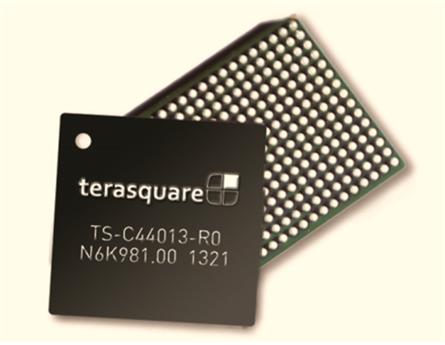Professor Hyeon-Min Bae of the Department of Electrical Engineering, developed an Ethernet Integrated Circuit (IC) capable of sending and receiving data at 100 gigabits per second (Gbps) while consuming 0.75 Watts (W) of power, a third of that of its competitors. This research effort was conducted jointly with Professor Bae’s Nanoscale Advanced Integrated Systems Lab and Terasquare Inc., a venture company founded by Professor Bae himself.

The convenience and speed of the modern day Internet owes itself to data centers, which are capable of transmitting and receiving data around the clock. Many businesses rely on outsourcing digital data to these third-party data centers, whose specialized equipment consume tremendous amounts of electricity. Also, the electrical consumption of these critical data centers has been on a consistent rise over the years. In 2006, American data centers consumed 1.5% of the nation’s total electrical output. This share is expected to rise to 10% by 2020.
In 2007, while he was working for Finisar, Professor Bae previously developed an Ethernet IC with a data transfer rate of 100 Gbps for the first time. The new and improved IC developed by Professor Bae’s team reduces the power consumption threefold. This recent development can also exclusively be fitted to small communications modules, such as CFP4 and QSFP28. This IC has applications not only limited to telecommunications, but also to develop high-speed Universal Serial Buses (USBs), advanced High-Definition Multimedia Interfaces (HDMIs), and next-generation television (TV) interfaces.
Terasquare Inc. is a venture company founded by Professor Bae in 2010. With the support of the Ministry of Trade, Industry and Energy, - formerly the Ministry of Knowledge Economy – Terasquare managed to recruit leading industry experts from other engineering firms. With intimate ties with the international community, Terasqure is considered to be a model venture company in Korea.
Professor Bae received his bachelor’s degree in 1998 at Seoul National University, and received his master’s and doctorate degrees at University of Illinois at Urbana-Champaign in 2001 and 2004, respectively. He worked as founding engineer at Intersymbol Communications, a company that specializes in telephone communications services, and as a scientist in Finisar Corporation, a company that supplies optical communication components and subsystems, before being appointed as a professor at the KAIST Department of Electrical Engineering in 2009.
Min Kyu Choi
scentimentality@gmail.com

